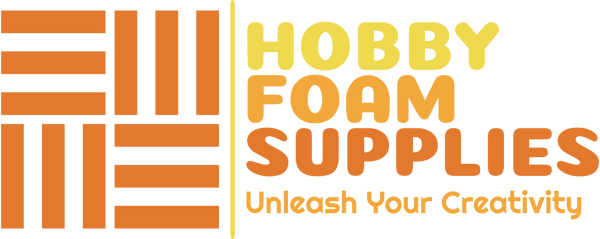Foam, a versatile and lightweight material, has become a go-to medium for hobbyists, artists, and model enthusiasts alike. Its ease of manipulation, affordability, and adaptability make it an ideal choice for bringing imaginative visions to life. In this comprehensive guide, we'll explore the fascinating world of foam for modelling, unlocking the secrets behind its popularity and providing valuable insights for your next creative endeavour.
-
Types of Foam:
- Expanded Polystyrene (EPS): Used for creating lightweight architectural models like building prototypes and topographical landscapes.
- Extruded Polystyrene (XPS): Ideal for crafting intricate model railroad layouts due to its durability and ease of carving.
- Polyurethane Foam: Commonly employed in crafting theatrical props and set designs for its versatility and lightweight nature.
- Styrofoam: Frequently used for creating detailed and lightweight cosplay armour pieces.
-
Tools of the Trade:
- Hot Wire Cutter: Essential for precise shaping of foam, such as carving foam blocks for architectural detailing.
- Utility Knife: Ideal for making straight cuts and basic shaping in foam sculpting projects.
- Foam Saw: Useful for cutting larger sections of foam, commonly employed in crafting large-scale sculptures.
- Rasps: Perfect for refining and smoothing edges, especially when working on detailed surfaces like cosplay accessories.
-
Sculpting Techniques:
- Architectural Models: Carving and layering techniques to recreate intricate building structures and landscapes.
- Miniature Landscapes: Sculpting foam to depict natural elements like mountains, rivers, and trees.
- Cosplay Props: Shaping and carving foam to create detailed weapon replicas and armour pieces.
-
Adhesives and Sealants:
- Foam-Safe Glues: Used to securely bond foam pieces in architectural models without damaging the material.
- Contact Cement: Ideal for attaching foam components in cosplay costumes for a strong and lasting hold.
- Foam Coat: Applied to seal the foam surface, providing a smooth canvas for painting.
-
Painting and Finishing:
- Acrylic Paints: Used to add vibrant colours to architectural models and dioramas.
- Spray Paints for Foam: Applied to achieve even coverage on large foam surfaces, common in prop making.
- Weathering Techniques: Employed to add realistic wear and tear to movie props and cosplay costumes.
-
Safety Precautions:
- Goggles and Gloves: Essential when using hot wire cutters, utility knives, and any tools involving adhesives or sealants.
- Ventilation: Crucial when working with strong adhesives and paints to ensure a safe workspace.
-
Project Ideas and Inspiration:
- Architectural Models: Recreating famous landmarks or designing futuristic structures.
- Dioramas: Depicting historical scenes, natural landscapes, or fantasy worlds.
- Movie Props: Crafting replicas of iconic weapons or accessories from favourite films.
- Cosplay Costumes: Building detailed and lightweight costumes inspired by beloved characters.

